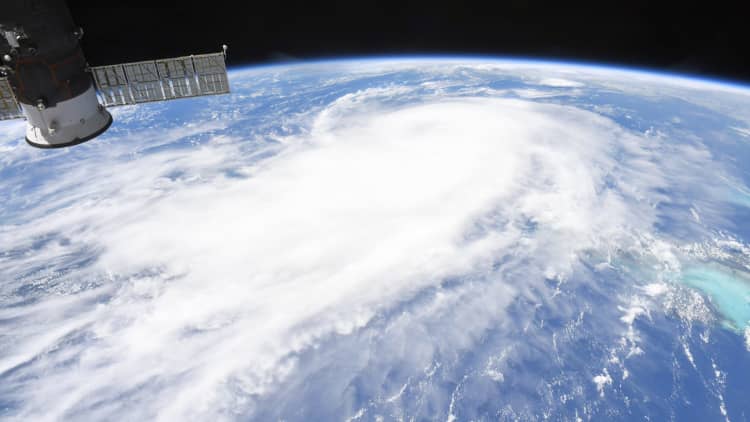
Hurricane Laura, a major Category 4 storm, is set to hit near the Texas-Louisiana border on Thursday morning as local officials scramble to evacuate thousands of residents.
The storm's rapid intensification shocked scientists and prompted forecasters to issue warnings of "unsurvivable storm surge" in Texas and Louisiana.
"Unsurvivable storm surge with large and destructive waves will cause catastrophic damage from Sea Rim State Park, Texas, to Intracoastal City, Louisiana, including Calcasieu and Sabine Lakes," the National Hurricane Center said on Wednesday. "This surge could penetrate up to 30 miles inland from the immediate coastline."
Laura could bring storm surge of nearly 13 feet to the coastline as well as flash flooding and tornadoes on land. The surge will arrive ahead of Laura's center late on Wednesday, so if people delay evacuating, the roads could already be flooded.
The storm battered the Dominican Republic, Puerto Rico and Haiti over the weekend, knocking out power for more than 1 million people, collapsing some homes and killing at least 23 people.
"I'm running out of words. Hurricane Laura is now one of the fastest-intensifying storms in recorded history in the Gulf of Mexico," climate scientist Eric Holthaus wrote in a tweet. "Laura now poses a catastrophic, potentially historic threat to coastal Louisiana."
Rising ocean temperatures driven by climate change are leading to more intense and destructive hurricanes. As hurricanes such as Laura strengthen more rapidly in warmer waters, states have less time to prepare storm mitigation and evacuate people from dangerous areas.
"One thing we've seen in particular — with Harvey in 2017, and Florence and Michael in 2018 and now with Laura — is very rapid intensification, wherein the storm strengthens from a tropical storm to major hurricane status in less than a day," said climate scientist Michael Mann.
"Such rapid intensification happens over very warm waters like we've seen in the tropical Atlantic and Gulf in recent years, and right now large parts of the Gulf are bathtub-level hot," Mann said.
More from Environment:
Atlantic hurricane season on pace to be one of the worst in recorded history
Coastal flooding could hit nearly 20% of global GDP as climate change accelerates sea level rise
Enormous amount of plastic will fill oceans, land by 2040 even with urgent action
Leaders in Texas and Louisiana have ordered evacuations for at least 500,000 residents as the states grapple with the ongoing coronavirus pandemic. Officials are encouraging evacuees to take shelter in hotels where they can self-isolate instead of evacuation centers that could be crowded.
"Just because a hurricane is coming to Texas does not mean Covid-19 either has or is going to leave Texas. Covid-19 is going to be in Texas throughout the course of the hurricane," Texas Gov. Greg Abbott said at a news briefing on Tuesday.
Laura is headed toward an area that comprises more than 45% of total U.S. petroleum refining capacity and 17% of oil production, according to the Energy Information Administration.
Major oil and gas companies have already evacuated employees from offshore production sites in the Gulf of Mexico.
As of Tuesday, producers shut down roughly 84% of offshore production in the Gulf as many refinery plants along the Texas and Louisiana coasts shutter in anticipation of life-threatening storm surge.
The prospect of a potentially major Category 4 hurricane has surfaced memories of the destruction in Louisiana 15 years ago caused by Hurricane Katrina, which killed at least 1,800 people and overwhelmed the state's levees.
Forecasters say the intensity and path that Laura is taking has certain similarities to how Hurricane Rita formed. Rita hit Louisiana in 2005 and caused widespread destruction.
This year's hurricane season is on track to become one of the worst in recorded history, partly because of hotter-than-average sea surface temperatures in the tropical Atlantic Ocean and Caribbean Sea.
The hurricane season runs from June 1 to Nov. 30 and is expected to bring between nine and 25 named storms to the U.S., with seven to 11 of those storms developing into hurricanes, according to forecasters at the National Oceanic and Atmospheric Administration's Climate Prediction Center. So far, there have been 13 named storms during the 2020 season.


